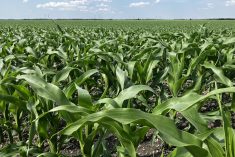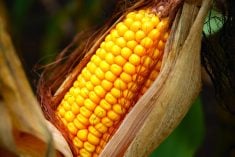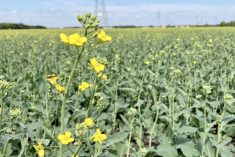With vomitoxin (DON) levels so prevalent in this year’s corn crop, the Ontario Soil and Crop Improvement Association (OSCIA) says a new DON testing cost-sharing initiative will help producers strategically market their grain.
Why it matters: OSCIA says cost-sharing will help farmers know how severe their deoxynivalenol (DON) issues are, and how to market their grain. However, the program applies to DON testing only.
The program is a targeted initiative under the federal government’s Canadian Agriculture Partnership (CAP) – a five-year, $3 billion joint investment from the federal government and provinces. As the administrators of the program, Barb Caswell, protection and assurance coordinator for OSCIA, says, three areas are covered:
Read Also

Brazil to reap record soy crop in 2025/2026, increase exports
Brazil’s Conab said the country will reap a record soybean crop of 177.6 million tons in the 2025/2026 harvest year, according to data released on Thursday.
- Testing at a lab or elevator;
- Purchasing test kits for DON; and
- Purchasing equipment for testing on-farm.
How it works: The program operates at 50 per cent cost share up to a maximum of $2,500 per farm business location (meaning every farm with a unique Premises Identification Number). To qualify, producers must identify at least one load – regardless of how many total loads there are – of corn with DON levels above five parts per million.
Caswell said this threshold was set to reflect Agricorp’s crop insurance numbers, in part because the levels accepted at each elevator can differ based on end-buyer stipulations.
The program is specifically focused on DON and not mycotoxins more generally, she added. For this reason, a $25 funding cap for elevator testing costs and the purchasing of individual test kits applies.
Most elevators perform a free test before accepting grain. In some cases, though, she says a cost can apply – up to $100 at the high end, thereabouts – if it looks at more than just DON levels. Similarly, individual DON test kits range from about $25 to $35, though can be more expensive if the scope is similarly more expansive.
For the same reason, a cap of $2,500 also applies to those wishing to take the more expensive route of buying full testing equipment.
“On-farm test equipment also varies […] it can run anything from $4,000 to $9,000 or more,” Caswell said. Farmers will then also need to purchase the necessary “consumables,” she added, such as test strips.
Removing (some) guesswork
Ben Rosser, corn specialist with the Ontario Ministry of Agriculture, Food and Rural Affairs, says the program is a good thing from a management perspective because it reduces the barriers associated with testing.
Performing more tests in a more cost-effective way, he says, allows producers to get a handle on otherwise unexpected variability. This is particularly significant given on-farm DON tests can be used to measure infection in both stored and newly-harvested grain – as well as in corn still standing in the field.
While options for marketing corn with high DON levels are limited, Caswell reiterated the cost-share program is part of a wider commitment under CAP to address DON issues. Other areas of support announced include research into the processing and marketing of DON-infected corn, as well as strategies to reduce the impact and frequency of the toxin.
“Farmers need to know what the levels are in order to try and market the product. The funding program is that first step […] it doesn’t help much after that,” Caswell said.
According to OSCIA, all costs must have been incurred after Oct. 12 this year to qualify. A close date for application submission will be announced at a later time. Producers can get more details and applications online or contact OSCIA by email.
— Matt McIntosh is a farm writer based between Essex County and Chatham-Kent, Ont. and works with his parents on a sixth-generation family farm.















